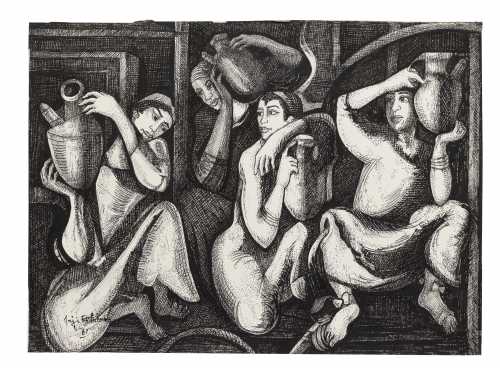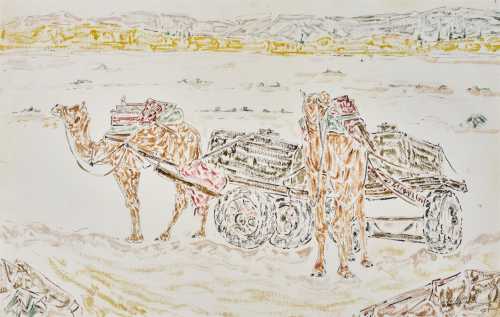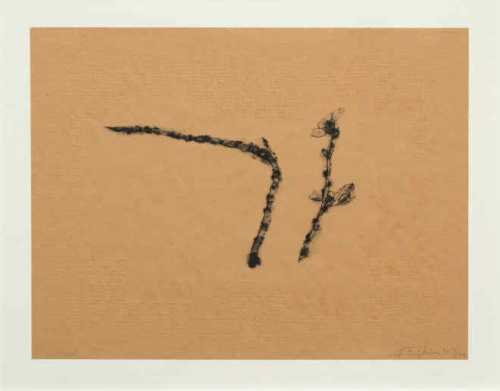- Dreams of a Prisoner (Ahlam Almuetaqalih) 1961
- Ink on Paper
- Drawing
- 51.3 * 37.5 cm
- Framed
17 November 2021
Estimation
£4,000
5,513 USD
-
£6,000
8,270 USD
Unsold
Artwork Description
"Prison was a very enriching experience for my development as a human being and an artist. When a crisis or tragedy occurs, one is either empowered or destroyed" - Inji Efflatoun
Inji Efflatoun was known as a feminist and a political activist as well as an artist. A lifetime Marxist, Efflatoun became a staunch communist from her school days onwards. In 1942, she joined the Egyptian Communist organization Iskra (al-sharāra) and in 1945 she was one of the founding members of the League of University and Institutes' Young Women.
Her artistic education began when her mother, Salha Efflatoun, hired Kamel El Telmissany as Inji's private tutor. Encouraged by Telmissany, at the young age of eighteen Efflatoun exhibited her seminal work Young Girl and Monster (1941) alongside the avant garde Art and Liberty Movement.
Efflatoun foresaw her impending imprisonment, in March 1959. For the first time in Egyptian history, women were imprisoned for their political beliefs. Alongside twenty-five female political activists, Efflatoun was secretly arrested by Gamal Abdel Nasser's regime. Inji Efflatoun was imprisoned for four and half years, and used her paintings as a negotiating tool. In July 1963, she was released from incarceration and painting became her main activity until her death in 1989.
The present work which was painted in 1961 is the only work to ever appear at public auction from her period of imprisonment, which is considered to be one of the most important stages of her artistic development.
Her works from the prison period are characterised by their bold and textured brushstrokes, dark and expressive colours in an atmospheric and hypnotic trance. According to her memoirs it was in prison "that the reduction of her liberties enhanced her capacity for aesthetic appreciation, intensifying the wonder of even the smallest quantum of nature available to her gaze".
More lots by Inji Aflatoun
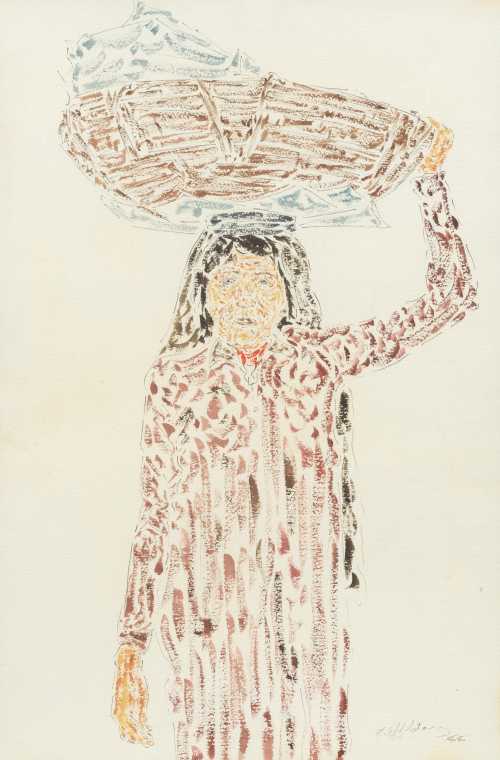
Standing Fellaha
Estimation
£8,000
10,667 USD
-
£12,000
16,000 USD
Sale Date
Bonhams
-
25 November 2025

Work in the Field
Estimation
£8,000
10,667 USD
-
£12,000
16,000 USD
Sale Date
Bonhams
-
25 November 2025
Realized Price
51,944 USD
Min Estimate
20,596 USD
Max Estimate
31,602 USD
Average Artwork Worth
+144.637%
Average Growth of Artwork Worth
Sales Performance Against Estimates
Average & Median Sold Lot Value
2021 - 2025
Performance vs. Estimate
2021 - 2025
Sell-through Rate
2021 - 2025
Similar Artworks
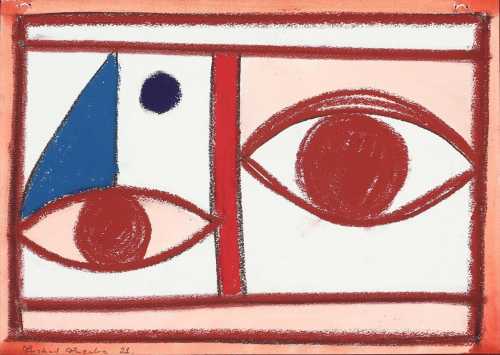
Untitled
Estimation
kr.12,000
1,866 USD
-
kr.15,000
2,333 USD
Realized Price
kr.14,000
2,177 USD
3.704%
Sell at
Sale Date
Bruun Rasmussen Kunstauktioner
-
21 October 2025
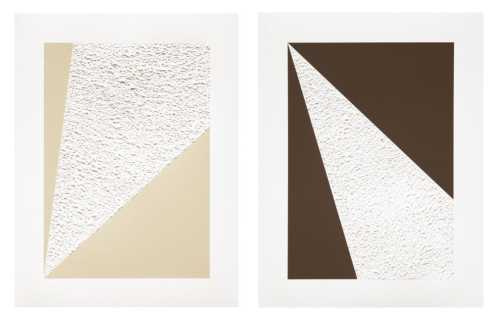
Sound of Angels
